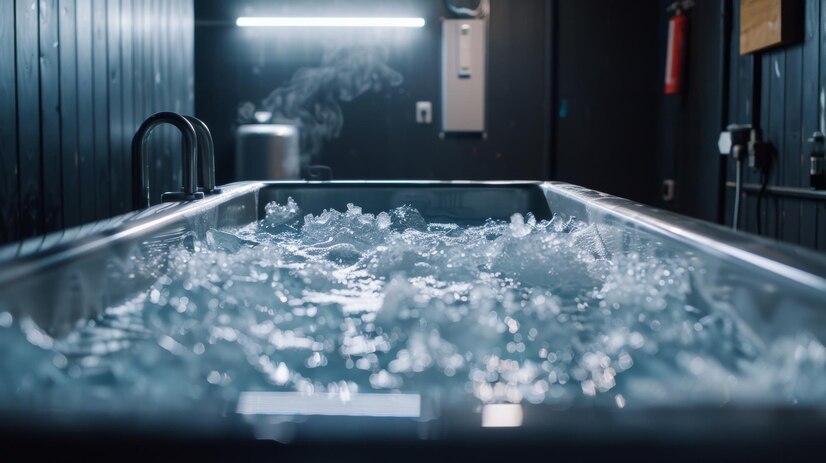In the world of sports and fitness, recovery is just as important as the training itself. Athletes and fitness enthusiasts alike are constantly searching for effective methods to aid their recovery process, minimize soreness, and enhance performance. One increasingly popular technique is the use of ice recovery bath. This method harnesses the therapeutic properties of cold exposure to rejuvenate the body and accelerate recovery.
The Science Behind Ice Recovery Baths
Ice recovery baths, often referred to as cold water immersion, involve submerging the body in cold water, typically between 10 to 15 degrees Celsius (50 to 59 degrees Fahrenheit), for a specific period, usually ranging from 10 to 20 minutes. The primary mechanism behind this technique is the body's response to cold temperatures, which can induce several physiological changes.
When the body is exposed to cold water, blood vessels constrict (a process known as vasoconstriction), which reduces blood flow to the muscles. This decrease in blood flow helps limit inflammation and swelling, both common after intense exercise. Once the body returns to a normal temperature, the blood vessels dilate (vasodilation), leading to a rush of blood to the muscles. This process helps to deliver oxygen and nutrients essential for recovery while flushing out metabolic waste products like lactic acid.
Benefits of Ice Recovery Baths
1. Reduced Muscle Soreness
One of the most significant benefits of ice recovery baths is their ability to alleviate delayed onset muscle soreness (DOMS), which often occurs after strenuous workouts or competitions. Studies have shown that cold water immersion can effectively decrease the sensation of soreness and discomfort in muscles, enabling athletes to recover more quickly and resume training.
2. Enhanced Recovery Speed
In addition to reducing soreness, ice baths can significantly speed up recovery time. The alternating cycles of vasoconstriction and vasodilation promote better circulation, allowing the body to repair itself more efficiently. This is particularly beneficial for athletes who train frequently or have back-to-back competitions, as it helps maintain optimal performance levels.
3. Decreased Inflammation
Inflammation is a natural response to physical stress, but excessive inflammation can hinder recovery and performance. Cold water immersion has been shown to lower markers of inflammation, thereby preventing prolonged swelling and tissue damage. This makes ice baths an excellent choice for athletes looking to manage inflammation effectively.
4. Psychological Benefits
The psychological aspect of recovery is often overlooked, but it plays a crucial role in an athlete’s performance. Ice recovery baths can promote mental resilience and toughness, as enduring the discomfort of cold water can build mental strength. Additionally, the refreshing sensation can improve mood and mental clarity, helping athletes feel rejuvenated.
5. Improved Sleep Quality
Many athletes struggle with sleep, particularly after intense training or competition. Cold exposure has been associated with improved sleep quality due to its ability to lower body temperature and signal the body to rest. A good night’s sleep is essential for recovery, making ice baths a valuable addition to a recovery routine.
How to Incorporate Ice Recovery Baths
Incorporating ice recovery baths into a training regimen doesn’t have to be complicated. Here are some tips for getting started:
- Timing: Consider taking an ice bath within 30 minutes post-workout to maximize recovery benefits. This is when the body is most responsive to cold exposure.
- Duration: Aim for 10 to 20 minutes in the cold water. Gradually work your way up to longer durations as your body adapts to the cold.
- Preparation: Fill a bathtub with cold water and add ice to achieve the desired temperature. Alternatively, outdoor bodies of cold water, like lakes or rivers, can be used.
- Mindset: Prepare yourself mentally for the initial shock of cold water. Deep breathing can help manage discomfort and improve your experience.
- Frequency: Depending on your training intensity and schedule, consider incorporating ice baths after particularly strenuous workouts or competitions.
Conclusion
Ice recovery baths represent a powerful tool in the recovery arsenal of athletes and fitness enthusiasts. The benefits of reduced muscle soreness, enhanced recovery speed, decreased inflammation, and psychological resilience make cold water immersion an attractive option. By understanding the science behind this recovery method and incorporating it into a regular routine, individuals can revitalize their recovery process, ensuring they remain at the top of their game. As with any recovery strategy, it's essential to listen to your body and adjust your approach based on personal experience and comfort levels.





Comments